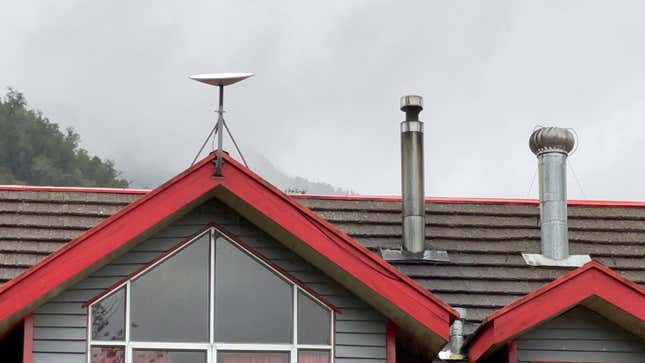
Elon Musk announced via a series of tweets (of course) that SpaceX has shipped 100,000 terminals for its Starlink satellite internet service in 14 countries, with the aim to “serve Earth soon.” That implies the service has gained an additional 10,000 users in less than a month—and fully global service hasn’t even rolled out yet.
Starlink’s goal is to deliver high-speed internet to rural areas, where broadband is extremely hard to come by. It differs from other satellite internet providers in that its strategy is to launch thousands of low-orbit satellites. Currently, SpaceX has deployed roughly 1,800 satellites, with the ultimate goal of 42,000 of these things floating around Earth by mid-2027. The benefit of these low-orbit satellites is that they have lower latency, which makes Starlink a viable alternative to 5G and fiber in remote areas.
The aforementioned terminals are part of the $499 starter kit, which is separate from the $99 monthly fee and also includes a stand, power supply, and a wifi router. While initial speed tests showed inconsistent results, a more recent Ookla test showed promising improvements with speeds approaching what you get from fixed broadband.
While we don’t know the exact numbers, it appears that Starlink is growing at a steady clip. In October, SpaceX opened up its public beta program and by May, the company said it had already received upwards of 500,000 orders. Musk also said earlier this summer that he expects to reach 500,000 active users by mid-2022. According to Business Insider, Starlink had roughly 10,000 users in February this year. CNBC also noted that number had shot up to 90,000 by the end of July, with 20,000 of those subscribers coming in the last month prior to reporting. That came from a SpaceX call with the Federal Communications Commission on July 29—which seems to hint Starlink’s added yet another 10,000 active users in about three weeks.
While Starlink does provide a much-needed service to remote areas, it’s not without its problems. The satellites have caused headaches for astronomers, as they inadvertently photobomb long-exposure shots of space due to their reflective surfaces. Though SpaceX has made strides with a newer anti-reflective coating, astronomers say it’s not enough.